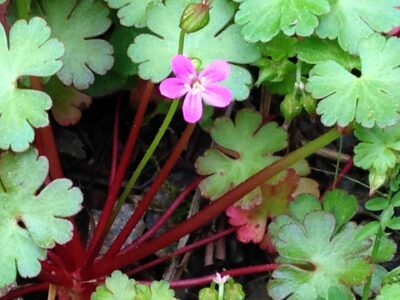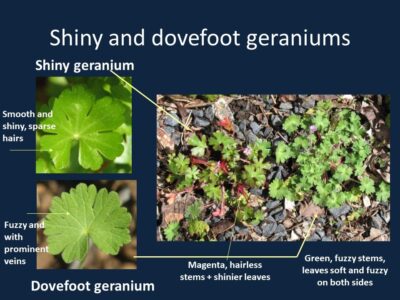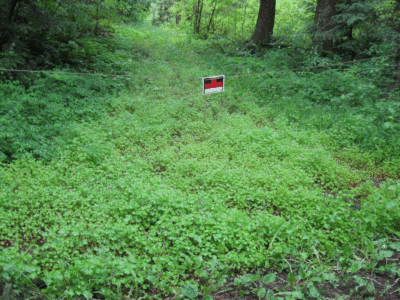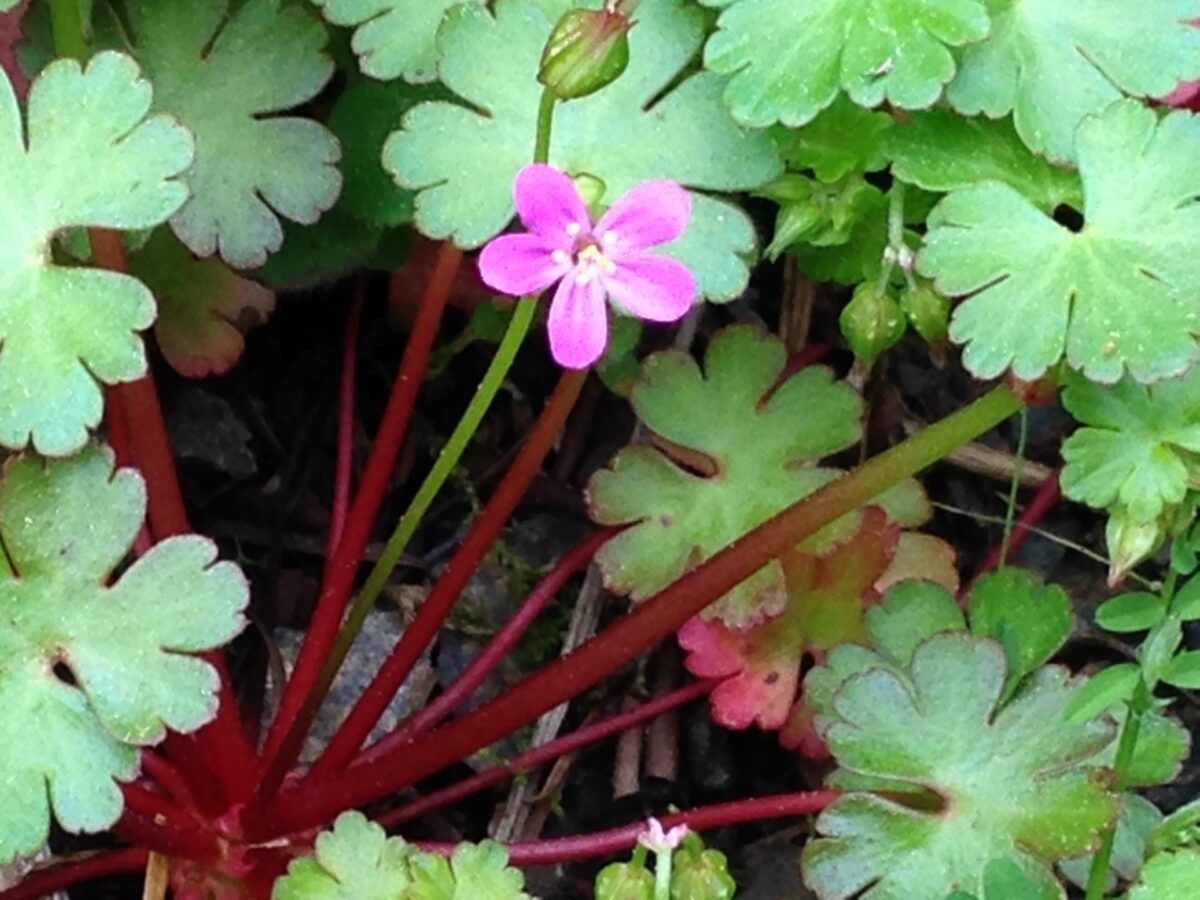
Shiny geranium close up
— San Juan County Noxious Weed Board
As Invasive Species Awareness Week (February 26 to March 3, 2024) marches on, the Land Bank and San Juan County Noxious Weed Control Program are highlighting a tiny-but-mighty “Most Wanted” invader. Unlike conspicuous noxious shrubs like Spurge laurel or Scotch broom, you’re going to have to look a little closer to find this one – at just a few inches high with fragile stems, a weed wrench is useless.
Shiny geranium (Geranium lucidum) is a class B noxious weed in Washington State and on the ‘prohibited plants list’ (WAC 16-752), which means this escaped ornamental is prohibited for sale or distribution from individuals or commercial plant nurseries. While we can be thankful that shiny geranium isn’t toxic like many noxious weeds, it displays the hallmark of its ilk: the ability to aggressively take over habitat formerly occupied by a diverse array of native species. If left unchecked, shiny geranium can form homogeneous carpets in forest understories and rocky banks.
 The first step when dealing with any invasive species is proper identification. The “shiny” designation helps us distinguish it from the main look-a-like: Dovefoot (Geranium molle).While both species are diminutive, introduced geraniums, and have leaves of similar shape and size, Dovefoot has green stems and fuzzy leaves, Shiny geranium has reddish stems and smoother, waxy leaves (see illustration). Dovefoot is a common lawn weed that does not require management as do listed noxious weeds like Shiny geranium.
The first step when dealing with any invasive species is proper identification. The “shiny” designation helps us distinguish it from the main look-a-like: Dovefoot (Geranium molle).While both species are diminutive, introduced geraniums, and have leaves of similar shape and size, Dovefoot has green stems and fuzzy leaves, Shiny geranium has reddish stems and smoother, waxy leaves (see illustration). Dovefoot is a common lawn weed that does not require management as do listed noxious weeds like Shiny geranium.
Control Methods
Shiny geranium forcefully ejects its seeds onto passersby, whether shoes, animals, or vehicles, so special care should be taken to clean off to prevent contamination to other areas. The species is also a known “hitchhiker” in nursery pots, which should be inspected before taking plants to a new location.
 Once established, Shiny geranium is challenging to control. Small patches can be carefully hand-pulled or dug out before they are in seed, but take care to remove as much root and stem as possible to prevent plants from re-sprouting. Put all plant material in garbage bags – not compost – to prevent it spreading more. When a patch is large, manual removal becomes impractical and management is best achieved with the careful application of an appropriate herbicide. No matter what method you use, follow up throughout the seasons and for several years to ensure successful eradication and depletion of the seed bank.
Once established, Shiny geranium is challenging to control. Small patches can be carefully hand-pulled or dug out before they are in seed, but take care to remove as much root and stem as possible to prevent plants from re-sprouting. Put all plant material in garbage bags – not compost – to prevent it spreading more. When a patch is large, manual removal becomes impractical and management is best achieved with the careful application of an appropriate herbicide. No matter what method you use, follow up throughout the seasons and for several years to ensure successful eradication and depletion of the seed bank.
Unfortunately, Shiny geranium has really taken off in San Juan County. An infestation along Olga Road on Orcas Island is rapidly spreading to adjacent properties up and down slope. Without intervention, Shiny geranium will continue its relentless march, eventually reaching Moran State Park. And as of 2022, swaths have been found in Friday Harbor.
For assistance identifying and controlling Shiny geranium, please contact the Noxious Weed Control Program at 360-376-3499 or jasono@sanjuancountywa.gov. Learn more about invasive weeds in our region by visiting the Washington State Noxious Weed Board website (www.nwcb.wa.gov) or San Juan County Noxious Weed Control Program website (www.sanjuancountywa.gov/1975/Noxious-Weeds).


